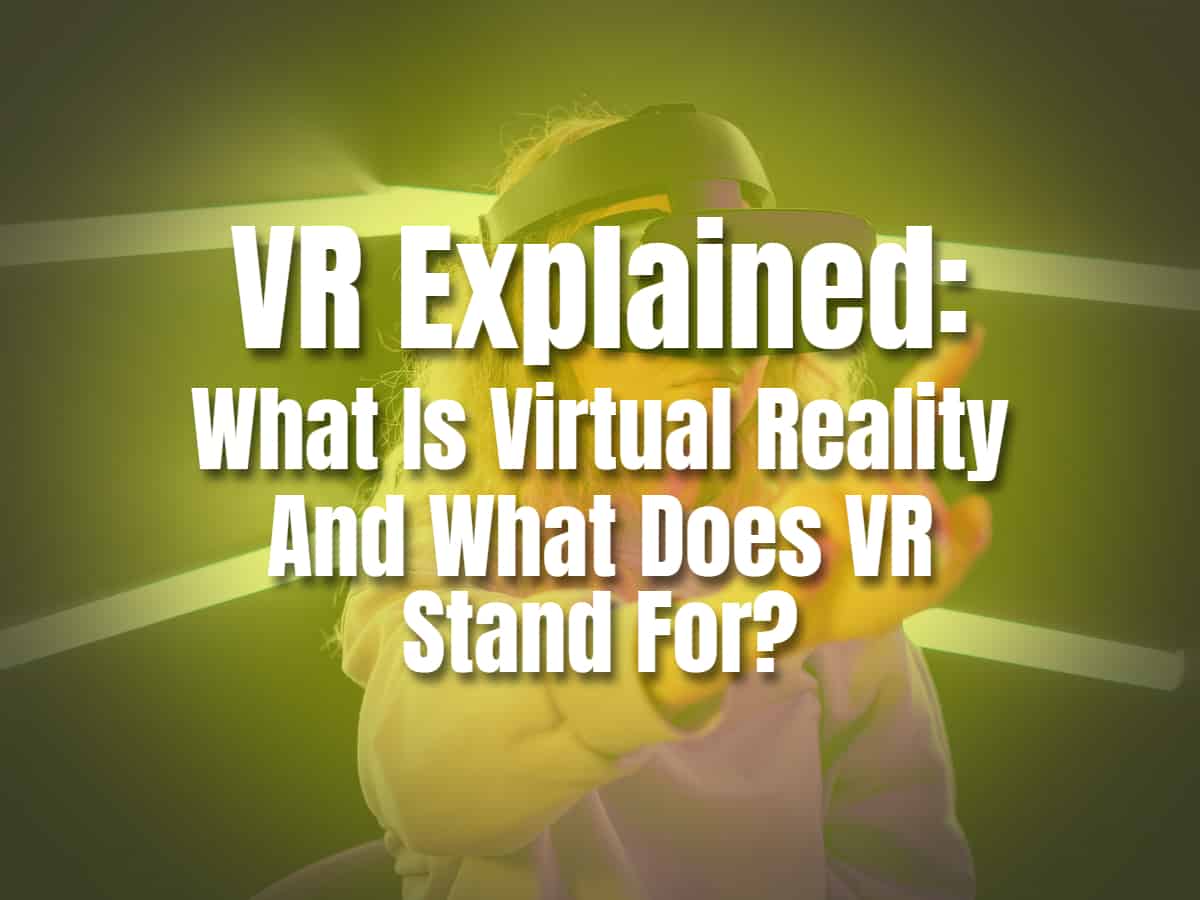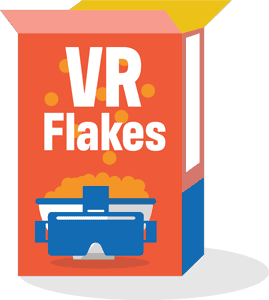
VR Explained: What is Virtual Reality and What Does VR Stand For?
VR which stands for Virtual Reality is no longer just a science fiction concept; it's now an innovative technology that allows us to experience things beyond our physical world. From gaming to education, VR has become an emerging trend in various industries. But what does VR stand for? In this article, we'll explore the world of VR and how it works. Whether you're a tech enthusiast or just curious about this technology, read on to learn more about the history, types of VR, how it works, and popular devices. Get ready to immerse yourself in the world of VR!
What is VR?
Virtual reality is a computer-generated environment that simulates a real-world experience. It's like stepping into a different world where you can interact with objects, play games, and even socialize with other users.
To experience virtual reality, you need a VR headset that displays images or videos and tracks your movements to make you feel like you're really in the virtual world. Some headsets also come with hand controllers that allow you to interact with the environment more realistically.
VR has become increasingly popular in recent years because it provides an immersive experience that traditional media cannot match. From entertainment to education and training, virtual reality is being used in many fields.
So if you're looking to try something new and exciting, consider giving virtual reality a go. Who knows where it will take you!
A brief history of VR
Hey there! Are you curious about the history of VR? Let's take a quick trip down memory lane.
Believe it or not, VR has been around since the 1960s. The first head-mounted display was created by Ivan Sutherland and his students at Harvard University. However, the technology was too expensive and bulky for commercial use.
Fast forward to the '90s, and we saw a resurgence of interest in virtual reality. Companies like Sega and Nintendo released gaming consoles that used VR technology. Unfortunately, they didn't quite catch on with consumers due to high prices and limitations in technology.
It wasn't until recently that VR became more accessible to the general public with devices like Oculus Rift and HTC Vive hitting the market. With advancements in hardware and software, virtual reality is now being used for everything from entertainment to healthcare.
It's exciting to think about what the future holds for this ever-evolving technology. Who knows what kind of immersive experiences we'll be able to have in the years to come!
Types of VR (Virtual Reality, Mixed Reality, Augmented Reality, Extended Reality)
Are you familiar with the different types of VR? Let me break it down for you.
First off, we have Virtual Reality or VR. This is when you enter a completely computer-generated environment that can be interacted with through a headset and/or hand controllers. Think of it like stepping into a whole new world.
Next up, we have Mixed Reality or MR. This is similar to VR but adds in real-world elements that are tracked and incorporated into the virtual environment. It's like having virtual objects interact with your real-world space.
Then, there's Augmented Reality or AR. This is when computer-generated elements are added onto the real-world environment around you, such as filters on social media apps or Pokémon Go.
Lastly, we have Extended Reality or XR which encompasses all of the above and more. It includes any technology that blurs the line between reality and virtuality.
So whether you're a gamer looking for an immersive experience or a business seeking new ways to train employees, there's sure to be a type of VR that suits your needs. Happy exploring!
How does VR work?
Curious about how VR works? Let me give you a quick rundown!
First off, you'll need a VR headset that can track your head movements and display images in front of your eyes. When you put on the headset, it creates the illusion of being in a different environment.
But how does the environment change as you move around? Well, that's where software comes in. The software tracks your movements and adjusts the virtual environment accordingly. It's like wearing a pair of goggles that show you a different view depending on where you're looking.
In short, VR works by creating a convincing illusion of being in a different place through the use of specialized hardware and software. So go ahead, dive into another world, and see what adventures await!
Popular VR Devices
Perhaps the first most well-known VR device is the Oculus Rift. This headset has been around since 2016 and has become popular thanks to its impressive specs and wide range of games available back in its time.
But the Oculus Rift wasn't the only player in town. There's also the HTC Vive, which boasts some of the best graphics on the market and allows for room-scale experiences. And let's not forget about PlayStation VR, which is perfect for console gamers who want to take their gaming experience to the next level.
Today these same makers and more tech players have developed successors and more advanced VR devices. Among them are Meta Quest 2 (formerly Oculus Quest 2), Meta Quest Pro, HTC Vive Pro, Pico 4, and the PS VR2 among many others. The VR world is ever more vibrant with more exciting options for VR headsets and accessories.
No matter which device you choose, one thing is certain: virtual reality is an incredible technology that allows us to explore new worlds and have fun in ways we never thought possible. So go ahead, strap on a headset, and get ready for an adventure!
VR stands for Virtual Reality and the exciting user VR experience that awaits
In conclusion, VR stands for virtual reality and it's a technology that allows users to interact with a digital environment through the use of software and hardware devices. From gaming to education, VR has become increasingly popular in recent years and there are now several devices available for users to choose from, each with their own unique features and benefits. Whether you're looking for an immersive gaming experience or simply want to explore new worlds, VR is definitely worth checking out. So why not strap on a headset and see what all the fuss is about? Who knows, you might just be surprised by how much fun you have!



